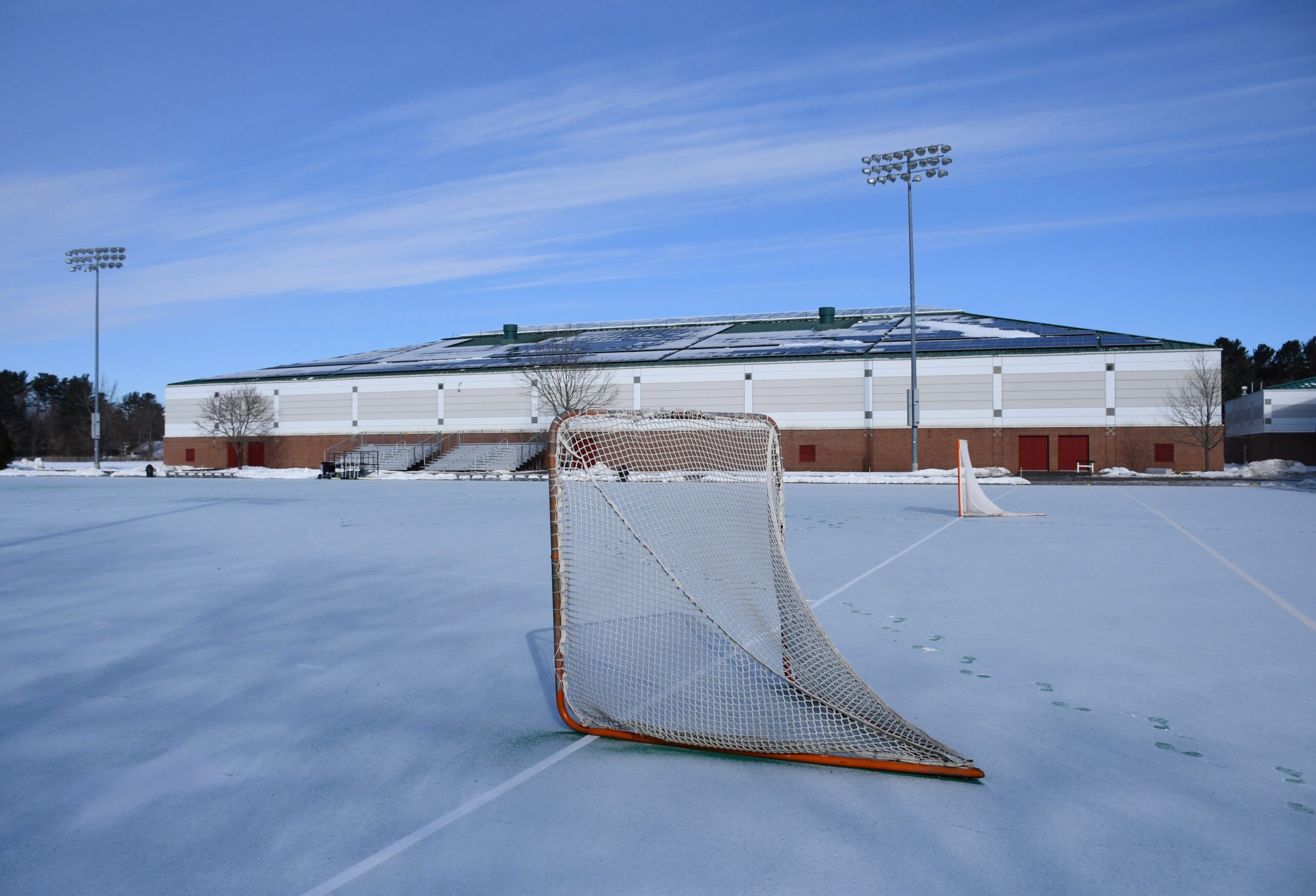Winter weather restricts field access, Farley overcrowded
March 1, 2019
 Graham Bendickson
Graham BendicksonNearly every evening for the past two weeks, the men’s baseball team has begun practice in Farley Field House at 9 p.m., not leaving until 11:30 or midnight. The team works on the skills that they can indoors, just feet away from their diamond, which is currently under several layers of snow and ice.
“We know it’s kind of a sucky situation, but we make the most of it,” said pitcher and infielder Jack Wilhoite ’19.
Though the below-zero windchill might tell a different story, it’s officially spring sports season. For athletes, coaches and athletic training staff, this means assembling the annual jigsaw puzzle of allocating limited indoor practice space and time as equally as possible until the snow melts. The puzzle is further complicated by an overlap with winter sports teams, athletic department decisions about facility use and non-varsity teams and groups that want to use the space.
Lynn Ruddy, associate director of athletics and an assistant coach for the track team, has been a part of piecing that puzzle together since Farley was completed in 1987. At the beginning of the spring semester, she meets with coaches to discuss which time slots each team will take in the case of inclement weather.
On a regular weekday, Farley is completely booked from 4:30 p.m. to 12:30 a.m. by varsity teams: track and field, tennis, softball, baseball and lacrosse. Schedules struggle to fit some teams—such as men’s and women’s rugby—at all. The men’s and women’s tennis teams can’t practice at the same time, so one squad practices at Maine Pines Racquet and Fitness on Harpswell Road.
“It’s just like playing on five chess boards at once and trying to move things around the best you can. I try to help people as much as I can, but if we had another field house it’d be filled completely,” said Ruddy. “We would still be looking for time for people, because that’s how much people want to do things.”
Other indoor spaces are booked, too. At the moment, Morrell Gymnasium is reserved for the women’s basketball team in its postseason. It also has certain restrictions as to which teams can use the space. Lacrosse and baseball, for example, are not allowed in this space. Sargent Gymnasium is smaller and booked for intramural and club sports teams.
The two astroturf fields–Ryan and Whittier fields–can be plowed and used despite the snow and cold. The women’s and men’s lacrosse teams take advantage of these spaces, but other teams cannot, because of predetermined restrictions on timing and decisions made by the athletic department.
Due to the recent two-phase renovation of Whittier Field, which included the introduction of astroturf, resurfacing the Magee-Samuelson Track and the addition of a new locker room and training room facility, the athletic department has not yet scheduled other spring sports teams, like baseball and softball, to practice there. According to Tim Ryan, Ashmead White Director of Athletics, the athletic department is still becoming accustomed to “managing use of the facility.”
An agreement with neighbors upon construction of the new facilities at Whittier prohibits practices from ending after 8 p.m. Currently, lacrosse is the only team practicing on Whittier Field, from 4:30-7 p.m, which prevents other teams from practicing afterwards.
“There are no external parameters that are put in place that would limit the teams that are able to use Whittier Field,” said Ryan. This includes its facilities as well: a training room and the new hydrotherapy room.
An overbooked Farley means that some teams and staff leave the field house in the early hours of the morning.
“We’re not quite a 24-hour operation during the overlap time [with winter sports], but we’re pretty close,” said Ryan.
Head Athletic Trainer Dan Davies and his staff often work 11 hour days during this period. Davies arrives at 8 a.m. and leaves at 7 p.m. Some athletic trainers leave even later, since there has to be a trainer present whenever a varsity sports team is practicing. The late-night practices, especially in conjunction with several winter sports, puts a real pressure on his staff.
“There are 31 sports teams and six trainers [for all seasons],” said Davies. “Do the math.”
The circumstances this year are nothing new for spring athletes. Though practicing outside is the most desirable option, it comes with its own challenges and restrictions. For example, the NCAA doesn’t permit teams to practice when the temperature, including windchill, drops below zero degrees.
“It is tough but it’s sort of par for the course. You sign up for it when you decide to play a sport at Bowdoin,” said Paul Nardone ’19, a member of the men’s lacrosse team. The team hasn’t yet practiced inside this season, but Nardone admitted that the players have gotten creative with their layering in order to keep warm–latex gloves under another pair of gloves seem to do the trick.
For Allison Williams ’19, a member of the women’s lacrosse team, practicing where the team plays is worth enduring the sub-freezing conditions.
“Being outside is just way, way better [and] a more productive use of our time, because the space is so much bigger and it’s way more game-like,” said Williams.
But Wilhoite said that practicing inside also has its advantages. Late night practices force the team to manage its time well, completing homework before practice. Additionally, the Polar Bears can also work on all parts of their game without feeling pressured by another team waiting to use the field house after them.
And then, finally, when the snow and ice melt and the dirt thaws, after weeks of being stuck indoors, they’ll make the most of it.
“It’s definitely less than ideal, but it’s good for our team chemistry and character,” said Wilhoite. “At least, that’s what we believe.”

Comments
Before submitting a comment, please review our comment policy. Some key points from the policy: